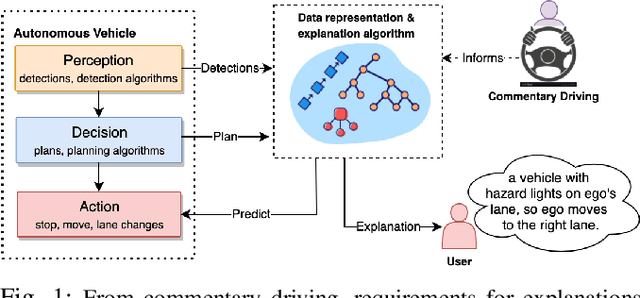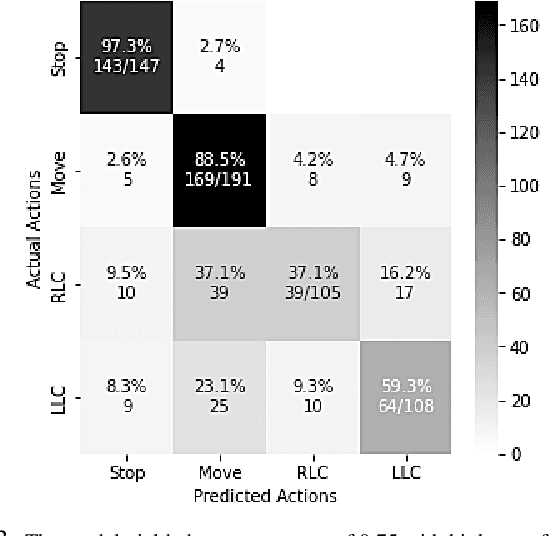Sule Anjomshoae
From Spoken Thoughts to Automated Driving Commentary: Predicting and Explaining Intelligent Vehicles' Actions
Apr 19, 2022



Abstract:Commentary driving is a technique in which drivers verbalise their observations, assessments and intentions. By speaking out their thoughts, both learning and expert drivers are able to create a better understanding and awareness of their surroundings. In the intelligent vehicle context, automated driving commentary can provide intelligible explanations about driving actions, and thereby assist a driver or an end-user during driving operations in challenging and safety-critical scenarios. In this paper, we conducted a field study in which we deployed a research vehicle in an urban environment to obtain data. While collecting sensor data of the vehicle's surroundings, we obtained driving commentary from a driving instructor using the think-aloud protocol. We analysed the driving commentary and uncovered an explanation style; the driver first announces his observations, announces his plans, and then makes general remarks. He also made counterfactual comments. We successfully demonstrated how factual and counterfactual natural language explanations that follow this style could be automatically generated using a simple tree-based approach. Generated explanations for longitudinal actions (e.g., stop and move) were deemed more intelligible and plausible by human judges compared to lateral actions, such as lane changes. We discussed how our approach can be built on in the future to realise more robust and effective explainability for driver assistance as well as partial and conditional automation of driving functions.
Explanations of Black-Box Model Predictions by Contextual Importance and Utility
May 30, 2020



Abstract:The significant advances in autonomous systems together with an immensely wider application domain have increased the need for trustable intelligent systems. Explainable artificial intelligence is gaining considerable attention among researchers and developers to address this requirement. Although there is an increasing number of works on interpretable and transparent machine learning algorithms, they are mostly intended for the technical users. Explanations for the end-user have been neglected in many usable and practical applications. In this work, we present the Contextual Importance (CI) and Contextual Utility (CU) concepts to extract explanations that are easily understandable by experts as well as novice users. This method explains the prediction results without transforming the model into an interpretable one. We present an example of providing explanations for linear and non-linear models to demonstrate the generalizability of the method. CI and CU are numerical values that can be represented to the user in visuals and natural language form to justify actions and explain reasoning for individual instances, situations, and contexts. We show the utility of explanations in car selection example and Iris flower classification by presenting complete (i.e. the causes of an individual prediction) and contrastive explanation (i.e. contrasting instance against the instance of interest). The experimental results show the feasibility and validity of the provided explanation methods.
 Add to Chrome
Add to Chrome Add to Firefox
Add to Firefox Add to Edge
Add to Edge